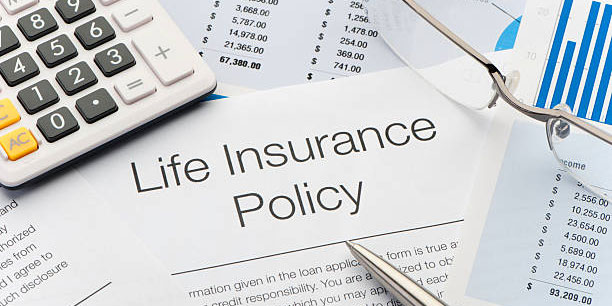If you’re one of the millions of Americans who have taken out an FHA loan, you may ask yourself: how can I get rid of my FHA mortgage insurance premium (MIP)? You’re not alone.
An increasing number of homeowners are now discovering that when they refinance their existing FHA loans to a conventional loan with no PMI, they can save hundreds or even thousands on monthly payments and lower their total spending over the loan's lifetime.
In this blog post, we explore all your options for eliminating your MIP with an FHA Loan and discuss why it is worth considering if you want to take control over your financial future.
How do I cancel FHA mortgage insurance?
If you have an FHA loan, you must pay monthly mortgage insurance to cover the costs of potential defaults. However, if your home has increased substantially in value or if you have been making payments on time for a significant amount, you may be able to cancel your mortgage insurance altogether. Cancelling FHA mortgage insurance can save homeowners hundreds of dollars each month and thousands over the life of their loan.
The first step towards canceling your FHA mortgage insurance is to contact your lender and discuss whether or not it is possible, given your current situation. Generally speaking, lenders will allow borrowers to remove their MIP once they have mortgages for at least five years and the balance has gone down to 78% or less of the original loan amount.
In addition, FHA requires borrowers to have a good payment history with up to one 30-day late payment in the previous 12 months. If you meet these criteria, your lender may allow you to cancel the mortgage insurance without refinancing.
Refinancing to remove FHA MIP

Refinancing to remove FHA MIP is an attractive option for homeowners looking to save on their monthly payments. By refinancing an FHA loan into a conventional loan with no PMI, you can significantly reduce your monthly mortgage payments and save thousands of dollars over the life of the loan.
It's important to note that refinance loans typically require higher credit scores than when you originally obtained your FHA loan. Additionally, refinancing may come with closing costs depending on market conditions that must be considered before deciding if it makes sense financially.
That said, it may be worth looking into if you can qualify for a refinance loan at a lower interest rate or want to take advantage of features like cash-out refinancing.
Refinancing process
You must begin the application process once you have determined that refinancing is right for you. This includes completing a mortgage application, gathering necessary documentation (such as pay stubs and bank statements), and submitting it to your chosen lender. The underwriting process will then occur, which involves verifying your financial information and assessing whether or not you qualify.
Refinancing can be lengthy and time-consuming, so it's important to understand all the terms before moving forward. Once approved, your new loan agreement should include details about when FHA MIP payments end.
Lower FHA MIP
FHA mortgage insurance (MIP) is a necessary part of an FHA loan, as it helps protect lenders from losses if a borrower defaults on their loan. Fortunately, there are ways for homeowners to lower, or even get rid of, their MIP and save money in the long run.
The most common way to remove FHA MIP is by refinancing your existing mortgage into a conventional loan with no PMI. This can significantly reduce your monthly payments and save thousands over the life of your loan. It’s important to note, however, that refinancing typically requires higher credit scores than when you first obtained your FHA loan. Additionally, closing costs may be associated with the refinance, depending on market conditions.
Advantages of Removing FHA Mortgage Insurance
Removing FHA mortgage insurance can bring several advantages, including:
Lower monthly payments
You can reduce your total monthly payment by getting rid of your MIP. This can also lower the remaining life of your loan, resulting in more savings.
No additional deposits
Without FHA MIP, you won’t have to worry about making extra payments each month.
Better loan terms
Refinancing into a conventional loan may offer better interest rates or other features like cash-out refinancing.
Less risk
By removing FHA PMI from your loan, you are no longer at risk of default if you cannot make timely payments.
MIP costs
It’s important to note that the costs associated with removing FHA MIP will vary depending on your situation and market conditions. It would help if you spoke to a mortgage broker or lender to determine exactly what you could expect regarding fees, closing costs, etc. when refinancing.
Tips for Meeting the Requirements to Remove FHA MIP

To remove FHA MIP, you must meet certain requirements, such as having a good payment history with no more than one 30-day late payment in the previous 12 months, and your loan balance must be 78% or less of the original loan amount. Here are some tips for meeting these requirements:
• Make sure you make all payments on time
• Pay extra towards your mortgage each month
• Avoid taking out additional loans or lines of credit
• Monitor your home's value to take advantage if it increases significantly.
By following these tips, you can put yourself in a better position to remove FHA MIP and save money on your loan. If you have questions about the process or need help determining if refinancing is right, don’t hesitate to speak with a mortgage specialist.
FAQs
Q: How can I remove my FHA MIP?
A: One way to eliminate your FHA mortgage insurance premium (MIP) is to refinance your existing loan with a conventional loan. By refinancing, you can switch from an FHA-insured loan and pay no PMI. This could save you hundreds of dollars each month and lower the total cost of the loan over its lifetime. Additionally, there are certain circumstances under which you may be able to have your MIP removed by the Federal Housing Administration (FHA). Please speak with a qualified Mortgage Professional to learn more about these options.
Q: Are there any risks involved in removing my MIP?
A: As with any financial decision, there are always risks. When refinancing your FHA loan to a conventional loan with no PMI, you will be subject to closing costs which can add up quickly. Additionally, if interest rates have risen since the time of your original loan, you may end up paying more in monthly payments than before.
Q: What should I do if I want to explore my options for removing my MIP?
A: The best way to start is by speaking with a qualified Mortgage Professional who can evaluate your situation and provide personalized advice and guidance on getting rid of your MIP. Your Mortgage Professional will be able to review your existing loan and recommend the best way forward for you.
Conclusion
Removing your FHA MIP can be a great way to save money on your monthly payments and lower the total cost of your loan over its lifetime. Refinancing is one option for removing FHA MIP. However, other factors must be considered before deciding if it is right for you. It’s important to speak with a qualified Mortgage Professional to understand your options and determine whether this is the right decision. They can review your situation and provide personalized advice and guidance.



